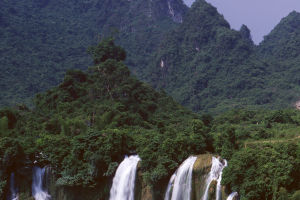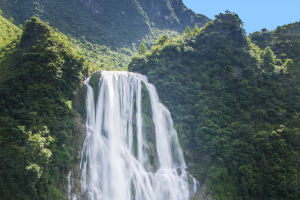An island is a naturally formed area of land surrounded by water, above water at high tide. Islands are not just land in the water but the sum of a series of islands, including lagoons and hidden reefs.
Objectively speaking, edible food, fresh water, and living places are the main characteristics of an island suitable for human habitation. As long as these three basic conditions exist, we can consider the island capable of sustaining human habitation.
There are more than 50,000 islands in the world, covering a total area of about 9.97 million square kilometers, almost the same size as Canada.
Islands are distributed on all seven continents of the world, with North American islands having the largest area, reaching 4.1 million square kilometers, accounting for 20.37% of the continent's area, while Antarctic islands have the smallest area, only 70,000 square kilometers, accounting for only 0.5% of the continent's area.
Islands can be divided into four categories based on their origin: continental islands, volcanic islands, coral islands, and alluvial islands.
The first type is a continental island, which extends out of the water from the mainland to the sea. The larger islands in the world are basically continental islands.
They are formed due to the rise of the earth's crust, the sinking of the land, the rise of the sea level, and the intrusion of seawater, which separates part of the land from the continent.
The second type is a volcanic island, formed by the long-term eruption of submarine volcanoes, the gradual accumulation of magma, and finally the surface of the water. The Hawaiian Islands are an example of a volcanic island formed by a series of submarine volcanic eruptions, which form a long straight line after emerging from the water.
The third type is a coral island. Corals are distributed in tropical oceans and generally have nothing to do with the structure, lithology, and geological evolution history of continents. A coral island is an island made up of living or dead coelenterate-coral reefs.
The fourth type is an alluvial island, also known as an impacting island. As their main component is sand, they are also called sand islands. Alluvial islands are sea land formed by land rivers carrying sediment to the sea and depositing it. Alluvial islands are formed where many large rivers in the world enter the sea.
Unique islands exist all around the world, such as Snake Island off the coast of Brazil, full of all kinds of poisonous snakes that have flourished since being stranded there via a land bridge linking to the mainland.
Socotra Island looks like an alien island due to its unique and superior natural conditions, consisting of four islets and two rocky islets. It is the main sea traffic route from the Indian Ocean to the Red Sea and East Africa.
Another unique island is the Rotating Island in the West Indies, a small uninhabited island dotted with swamps, slowly turning at a certain speed. Aldabra Island is the second-largest coral atoll globally, with a total area of 60 square miles consisting of four separate islands.
The existence of this island has been known to humans for hundreds of years, yet why it remains uninhabited is a mystery. About 150,000 Aldabra giant tortoises live on this atoll, and since the island is uninhabited, they do not have to worry about being hunted.
Islands are a fascinating part of the world's geography, with each type having its unique characteristics and formation. The diversity of islands, from the smallest to the largest, and the unique ecosystems found there, are awe-inspiring.
With their natural beauty, rich cultural history, and ecological importance, it is important to preserve these islands.


